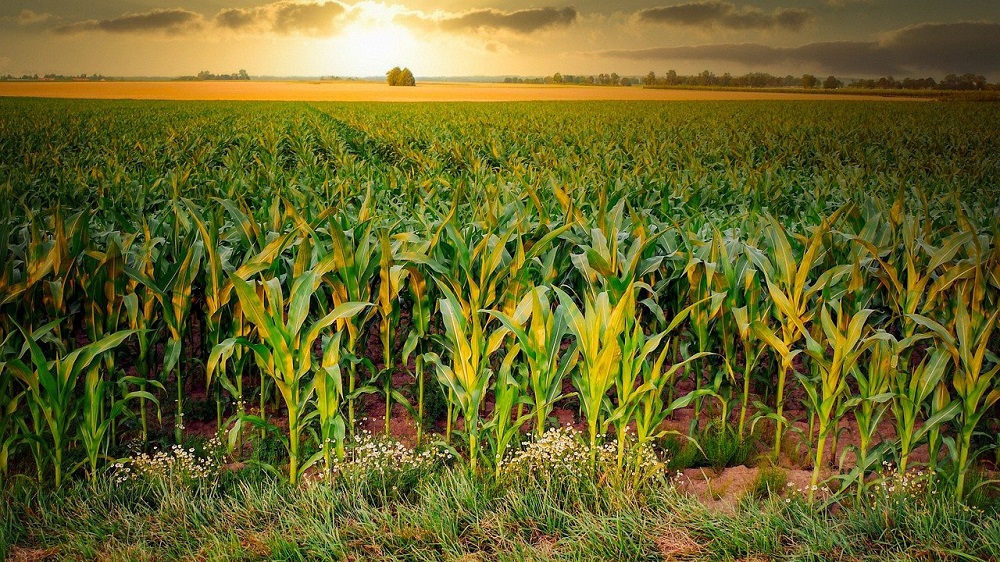Context:
Over the years India has witnessed a remarkable but often overlooked revolution in maize production.
Key Highlights
- The production of maize in India has more than tripled over the last two decades.
- From 1999-2000 to 2023-24, annual maize output has more than tripled from 11.5 million tonnes to over 35 million tonnes (2022-2023), and average yields have increased from 1.8 to 3.3 tonnes per hectare.
What is Green Revolution?
- The Green Revolution in India, beginning in the 1960s, transformed agriculture into a modern industrial system through the adoption of High-Yielding Variety (HYV) seeds, mechanized farm tools, improved irrigation facilities, and chemical pesticides and fertilizers.
- These advancements led to a substantial increase in food grain production, particularly in states like Punjab, Haryana, and Western Uttar Pradesh, making India self-sufficient in food grains.
- Key institutions such as the International Maize and Wheat Improvement Center (CIMMYT) in Mexico and the Indian Agricultural Research Institute (IARI) in New Delhi, along with notable scientists Norman Borlaug and M. S. Swaminathan, were instrumental in driving this revolution.
Significance of Maize cultivation
Maize Utilization in poultry and livestock
- The majority of maize is used as feed for poultry and livestock.
- A typical market-ready broiler bird consumes about 4 kg of feed, which is 55-65% maize by weight.
Industrial Use of Maize
- Approximately 14-15% of India’s maize is used for industrial purposes due to its high starch content (68-72%).
- This starch is used in various industries, including textiles, paper, pharmaceuticals, food, and beverages.
- Maize has recently become a feedstock for ethanol production, especially when sugarcane is not in season.
Initiatives to maximize the Maize Cultivation

Advances in Maize Research
- The Indian Agricultural Research Institute (IARI) developed India’s first “waxy” maize hybrid with high amylopectin starch content, suitable for ethanol production.
- The hybrid, known as Pusa Waxy Maize Hybrid-1, has a higher starch recovery rate, making it more efficient for ethanol production.
Collaboration and Field Trials
- IARI has partnered with the Uttar Pradesh Distillers’ Association for field trials of the waxy maize hybrid, promoting its cultivation for ethanol production to potentially boost ethanol yields significantly.
New Breeding Strategies
- CIMMYT (International Maize and Wheat Improvement Center), in partnership with the University of Agricultural Sciences, Bangalore, has established a maize doubled haploid (DH) facility in Karnataka.
- This facility produces genetically pure inbred maize lines, accelerating the breeding process and improving efficiency, with lines that are high-yielding and stress-tolerant.
Private Sector Involvement
- The private sector has significantly contributed to maize cultivation, with over 80% of India’s maize area planted with private sector-bred hybrids. CIMMYT supports this growth by sharing improved inbred lines with public institutions and private seed companies.
Maize cultivation in India and the world

- Maize (Zea mays L) or corn, globally is highly valued for its multifarious use as food, feed, fodder, and raw material for a large number of industrial products.
- The USA is the top maize producer followed by China, contributing 36% and 25% of world maize production.
- G, maize is known as the queen of cereals because it has the highest genetic yield potential among the cereals.
- India ranks 4th in production area and 7th in production, representing around 4% of the world maize growing area and 2% of total production.
- The major maize-growing states are Madhya Pradesh and Karnataka, each with 15% of the total maize area. After Karnataka and Madhya Pradesh, Bihar is the largest maize producer, while Andhra Pradesh boasts the highest productivity.
- Major Export Destinations (2022-23): Bangladesh, Vietnam, Nepal, Malaysia and Sri Lanka.
Also Read:
Small Animals ‘bdelloid rotifers acquire Antibiotic-Producing Genes from Bacteria

